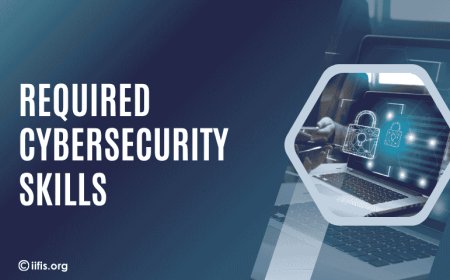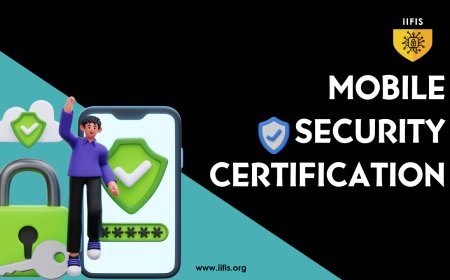Master Application Security in Easy Steps
Master application security with these easy, actionable steps! Learn essential security practices to protect your apps from threats and vulnerabilities while ensuring a secure user experience. Perfect for beginners and experts alike.
You're using your favourite social media app, scrolling through posts, messaging friends, or even making a purchase. Behind the scenes, these apps manage sensitive data—your details, passwords, and payment information. Millions of users rely on these apps to keep their data secure. This is where application security comes in. It’s all about ensuring that apps are protected from hackers looking to steal or damage this data. With cyberattacks becoming more frequent, securing applications has never been more important. Whether you're building an app or simply using one, understanding how to keep these digital tools safe is crucial for protecting user information.
What is Application Security?
Application security is a key component of cybersecurity, focusing specifically on securing software applications by identifying, fixing, and preventing the possibilities that attackers could exploit. This involves practices like secure coding, data protection, implementing strong authentication and authorization, and conducting regular security tests. While cybersecurity encompasses the overall protection of systems, data, and networks from threats, network security focuses on safeguarding the infrastructure that connects systems and applications. Application security complements these efforts by ensuring that the software itself is protected, preventing unauthorized access and data breaches within the broader cybersecurity framework.
The Importance of Application Security
-
App security is like locking your house. Just as you wouldn’t leave your home unlocked for anyone to walk in, apps need security measures to keep hackers from accessing sensitive data.
-
Without security, anyone can access your data. If an app lacks proper protections, it’s like leaving your door wide open, allowing unauthorized users (hackers) to steal valuable information.
-
Consequences of insecure apps:
-
Data breaches: Hackers can steal personal details, passwords, or financial information, leading to identity theft or fraud.
-
Loss of sensitive information: Users' private data can be exposed, causing both personal and financial harm.
-
Reputational damage:Companies that fail to secure their apps risk losing the trust of their customers, which can lead to a decline in business and long-term damage to their brand.
Key Concepts of Application Security
Authentication:
-
Verifies the identity of users, ensuring that only authorized individuals can access the application. Methods include passwords, biometrics, and multi-factor authentication (MFA).
Authorization:
-
Controls what authenticated users are allowed to do within the application, ensuring they only access resources or perform actions they have permission for.
Encryption:
-
Protects sensitive data by converting it into a secure, unreadable format both during storage and transmission, keeping it safe from unauthorized access.
Input Validation:
-
Ensures that only correctly formatted and expected data is processed by the application, preventing attacks like SQL injection and cross-site scripting (XSS).
Secure Coding Practices:
-
Involves writing code that avoids vulnerabilities and follows industry security best practices, reducing the risk of exploitation by attackers.
Security Patching and Updates:
-
Regularly apply security patches and updates to fix known possibilities in the application, preventing potential breaches from exploiting outdated software.
Step-by-Step Guide to Mastering Application Security
Understand the Most Common Threats
-
SQL Injection: Imagine ordering something online and entering your delivery address. An attacker using SQL injection can change your order by inserting harmful commands into the database query, altering the data, and accessing sensitive information.
-
Cross-Site Scripting (XSS): This occurs when attackers inject malicious scripts into a website that unsuspecting users then execute in their browsers. It’s like someone sneaking a virus into a webpage that runs on your computer.
-
Phishing: Attackers trick users into revealing sensitive information by pretending to be trustworthy entities (e.g., fake login pages or scam emails).
Use Strong Authentication Methods
-
Implement multi-factor authentication (MFA), requiring users to provide multiple forms of identification (e.g., password + fingerprint).
-
Enforce strong password policies (e.g., minimum length, combination of characters) to prevent weak password vulnerabilities.
Encrypt Sensitive Data
-
Encrypt user data in transit (when it’s being sent from one system to another) using protocols like HTTPS.
-
Encrypt data at rest (when it’s stored on servers) to protect sensitive information, like passwords and credit card numbers, from being exposed in case of a breach.
Keep Software Updated
-
Software updates often contain patches for known security flaws. Failing to update is like leaving a window open for attackers to exploit.
-
Automate updates where possible and monitor for any new vulnerabilities in your software stack.
Regularly Test for Vulnerabilities
-
Use penetration testing tools like Burp Suite or OWASP ZAP to simulate attacks on your app and find weak spots before attackers do.
-
Employ static code analysis tools that automatically check your code for vulnerabilities while you're writing it.
Common Mistakes to Avoid
-
Ignoring Security Early:
-
It’s much easier and more cost-effective to integrate security into your app from the start rather than trying to patch issues after the fact.
-
Weak passwords and mismanagement:
-
Failing to enforce strong password policies can leave your app vulnerable to brute-force attacks. Ensure users create strong passwords and consider password hashing and salting techniques.
-
Not Testing Enough:
-
Regular testing is crucial. Skipping tests allows vulnerabilities to go unnoticed, which can lead to catastrophic breaches later.
-
Assuming Security is Only for Experts:
-
Security basics are for everyone, not just security specialists. Every developer should be aware of common threats and security best practices.
Certifications to consider
Cybersecurity Certifications :
-
Certified Information Systems Security Professional (CISSP): this comprehensive certification covers risk management, security operations, and more.
-
Certified Ethical Hacker (CEH):focuses on ethical hacking techniques to identify vulnerabilities in systems and networks.
Network Security Certifications:
-
CCNA Security: P, focusing on securing network infrastructures, including firewalls and VPNs.
-
CompTIA Network+:a vendor-neutral certification offered by CompTIA, covering basic network security and management.
Application Security Certifications:
-
Certified Secure Software Lifecycle Professional (CSSLP): it covers secure software development practices and application security throughout the SDLC.
-
Certified Application Security Engineer (CASE): certification focusing on secure coding practices and application vulnerabilities.
Information Security Certifications :
-
Certified Information Security Manager (CISM): this certification is for those focused on information security governance and risk management.
-
Certified Information Systems Auditor (CISA): certification focusing on auditing, control, and monitoring of information security systems.
Information security is crucial in safeguarding the integrity, confidentiality, and availability of data across organizations. With the increasing complexity and sophistication of cyber threats, institutions must adopt comprehensive security strategies to protect their assets. The role of organizations like the International Institutes for Information Security (IIFIs) is vital in advancing global standards, research, and best practices in the field. By promoting secure systems and proactive defense mechanisms, IIFIs contribute significantly to enhancing information security frameworks, helping organizations stay resilient against cyber threats and protect sensitive information effectively.


















